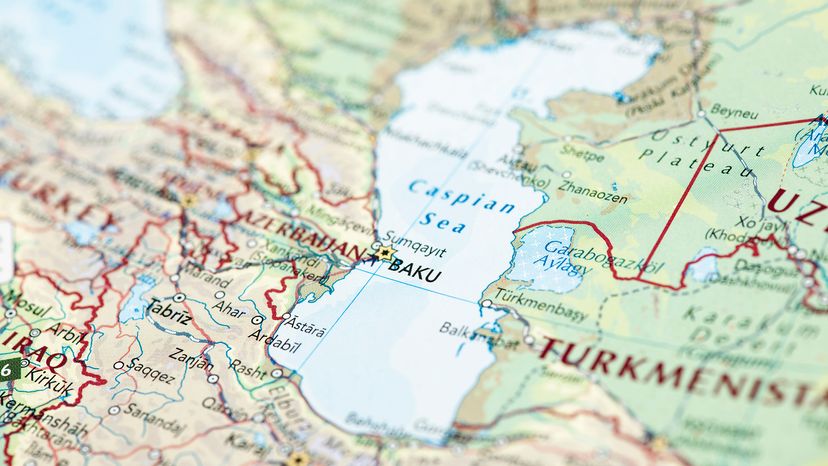The formation of the Caspian Sea unfolded over millions of years. Unlike the oceans, this body of water is not the result of tectonic plate movement or continental drift. Instead, it emerged through a combination of tectonic activity, geological processes and climatic changes.
During the late Cretaceous period, around 70 to 60 million years ago, the region that now encompasses the Caspian Sea was part of the ancient Tethys Sea, a vast ocean separating the supercontinents of Laurasia and Gondwana.
Over time, as tectonic plates shifted and collided, the Tethys Sea began to fragment and shrink, giving rise to smaller basins and seas, including the Caspian Sea region.
The gradual convergence of Eurasian and Arabian tectonic plates led to the uplift of mountain ranges, including the Caucasus Mountains to the west and the Alborz Mountains to its south. These mountain ranges acted as natural barriers, trapping water and creating a basin that eventually became the Caspian Sea.
At the same time, Earth's climate was fluctuating over millions of years, causing periods of glaciation and global warming to alter the sea level and precipitation patterns. During glacial periods, large ice sheets formed, locking up water and causing global sea levels to drop. This caused the Caspian basin to be cut off from the oceans reduced the volume of inflow from rivers.
During interglacial warming periods, melting ice sheets and increased rainfall led to rising sea levels and greater inflow of freshwater from rivers. These fluctuations in sea level and freshwater input affected the Caspian Sea's size, depth and salinity over time.
